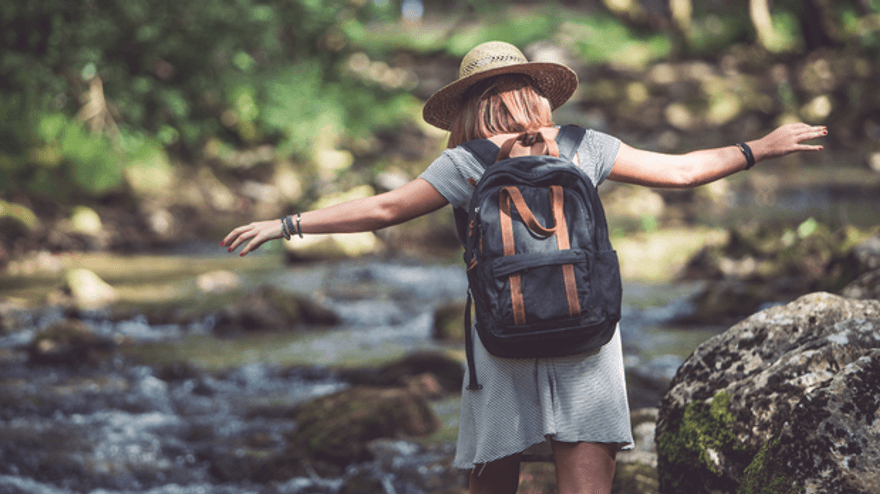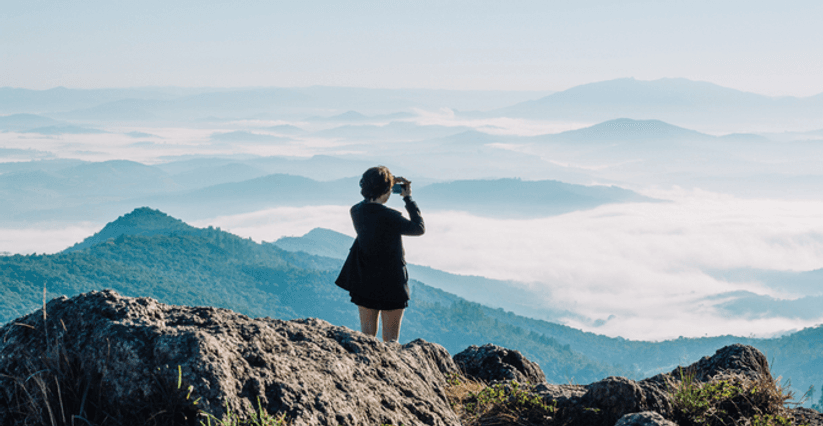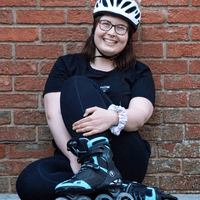16 February, 2023
After being diagnosed as autistic in 2020 at the age of 23, contributor Allie decided to share more about a topic that she was starting to understand. In this article Allie shares an excerpt of what she experiences when hiking.

I was very excited when I first began working on my upcoming debut, The Autistic Guide to Adventure. When my publisher chose to commission this book, it was a childhood dream come true for me! As cliche as that is, I was so happy to have the opportunity to share more about a topic that I myself was only just starting to understand, after being late diagnosed as autistic in 2020 at the age of 23.
When I was younger, I really struggled to access sport and other adventurous activities, without ever being able to identify why. Since my diagnosis, I now have names for the barriers I faced to leading the active lifestyle I desired - such as sensory sensitivity, executive dysfunction, emotional dysregulation, amongst many others. I still face these barriers today, but I now have the tools to address and mitigate them. I didn’t want to keep these tools to myself, which is how I came to write The Autistic Guide to Adventure. I wanted to share what I had learnt with the rest of my community, in case it could also help them.
The aspect of working on this project that I enjoyed most, in fact, was connecting with some of these members of the wider autistic community. I have spoken with so many fabulous people, from my talented illustrator Ella, to the interviewees from across different sports and outdoor activities who are profiled in the book, to future readers who would reach out to me on social media to share how excited they were for it to be released. I really can’t wait to start doing signings and Q&A events after publication day, because I will finally meet some of those fabulous people in real life.

Introduction
Going for a hike doesn’t only have to mean tackling the most technical terrain or finding the highest local hill to summit. A hike can be anything from a jaunt through the park after school to a day out on a designated trail with family or friends. It is an activity that is adaptable and accessible, with the appropriate forward planning. My dad is a wheelchair user, so we often tried to plan our hikes around trails that begin and end at the same car park, with either paved or gravel paths. Once you have your hiking boots or mobility aid, a wonderful thing about this activity is that it is then completely free. Immerse yourself in the natural world for a few hours and forget all about the stresses of homework or exams.
Why Try It?
In addition to being a great way to de-stress, hiking also offers a low impact route to improving your health and fitness. You will be getting a workout without the strain on your joints that can come with other activities like running. Plus, whilst you are out on a hike you’ll be learning new skills such as navigation with a map, understanding different types of terrain and reading the weather to predict what will happen next. If you want to add a whole new level of adventure to your outings, why not also track your distances against the journeys of your favourite fictional characters? You could accompany Paddington Bear on his 6314-mile trek from Darkest Peru to London or join Bilbo Baggins on his 967-mile quest from The Shire to the Lonely Mountain.
Sensory Expectations
If you are a sensory seeker, hiking is going to be a great activity for you, because each one of your senses will be engaged along the route. However, if your senses are easily overwhelmed, you’d be best to prepare some quick solutions to common problems before setting out on your hike. If it is a sunny day, you might find that it’s too bright to be comfortable, so taking a hat or sunglasses would be a wise decision. Not only would a wide-brimmed hat shelter your eyes, it would also protect the tops of your ears and back of your neck from getting burned – not at all a pleasant experience! If your local trails are anything like the ones near to where I live, there’ll also be a multitude of different distracting smells all at once. Some of these can be particularly powerful, such as wild garlic here in England. If it would help, bring a handkerchief or an old T-shirt that you have spritzed with a favourite scent to hold to your nose as you walk past any smell along the route that is overpowering. Finally, another personal top tip from me: always have a raincoat or blanket that you can lay on the ground when you want to sit down if there are certain surfaces that you don’t enjoy touching. I love being in green spaces, but I can’t stand the sensation of grass on my skin! That way, you can sit and rest, eat a picnic or enjoy the view without feeling irritated or uncomfortable.
Getting Started!
You have probably heard before the well-known saying, ‘Fail to prepare and prepare to fail’. Well, that’s exactly the mindset to have when thinking about getting ready for your first hike. Success starts with packing a bag for your outing that includes the following items: a raincoat, sun hat, sunglasses, an extra layer for warmth, snacks, water, a first aid kit, portable phone charger (if relevant), torch and a map in a waterproof case. You could search online for a step-by-step route to follow in an area that you are already familiar with, using a map alongside to practise your navigational skills without having to be too concerned with getting lost. Don’t worry if you don’t have any proper hiking boots to start with. Instead, wear shoes that you are already comfortable walking longer distances in. Never head out on a trail in new shoes that haven’t been broken in yet, because that is a sure recipe for painful blisters. If you are not going out with family or friends, make sure to tell someone where you are going and when you expect to be back, for your safety.
Support Recommendations
Having said this, it might be a good idea to go on your first hike with a more experienced friend or family member if you can. They could then share their tips and guide you along the route. If you know that there are likely to be certain challenges out on the trail that you don’t feel confident facing, consider adding step-by-step instructions on how to overcome them to the notes section of your phone or in a notebook that you take with you. That way you can refer to them whenever needed. Personally, I also like to take walking poles with me on every hike, regardless of elevation. This is because walking with poles helps you to keep your balance, avoiding trips or falls that could then lead to injury.

My name is Allie, and I love the great outdoors!
Most recent articles in HIKING

The Ramblers, Britain’s walking charity, bring their successful Out There Award to England, empowering 18-26 year olds to embrace the outdoors with confidence.

Looking for some motivation to get you excited and active for 2024? The Beacons Challenge, taking place on Saturday 6th July 2024, may well just be that rewarding opportunity you’ve been waiting for.

Exploring the great outdoors with your dog is a fantastic way to bond and keep both of you active. You can find suitable activities for any breed, whether splashing in the surf at the beach, trekking through scenic hiking trails, or scaling mountain peaks. Therefore, this article explores the best outdoor activities, providing tips and safety advice to ensure a fun and memorable experience.